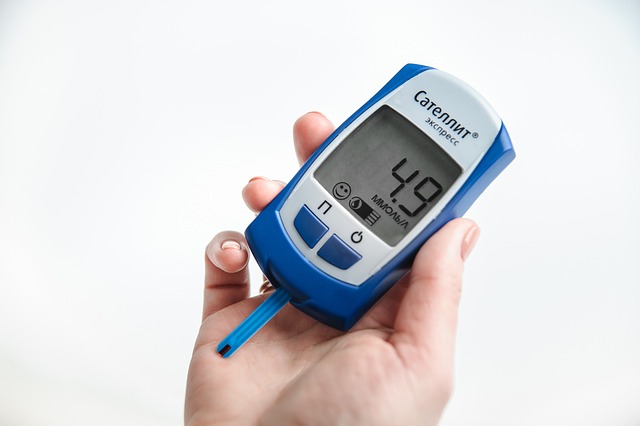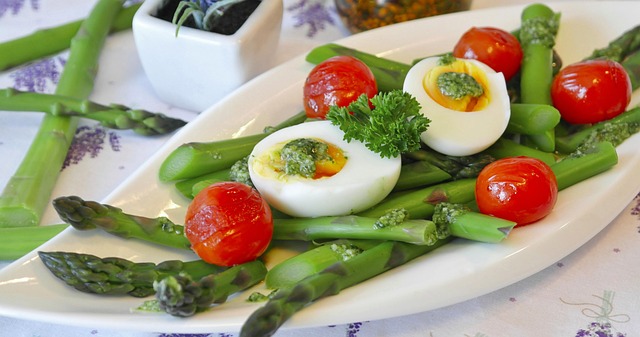Eating healthier is one of the most effective ways to lower risk for developing type 2 diabetes if you have prediabetes according to the Centers for Disease Control (CDC).
That can include losing weight if you are overweight, choosing foods that help stabilize or lower blood sugar, and limiting foods that spike blood sugar or increase insulin resistance.
There is an abundance of research on what to eat for prediabetes. The American Diabetes Association (ADA) has published its recommendations [1], and Lark Diabetes Prevention Program (DPP) follows them. These are some foods to eat more and less of to lower the risk for type 2 diabetes.
Eat more: vegetables

Non-starchy vegetables are low in calories and filling, making them great choices for weight loss, suggests Medical News Today. They are high in dietary fiber, which helps stabilize blood sugar levels. Aim for 3 to 5 servings a day.
Eat less: snack foods

French fries, potato chips, tortilla chips, pretzels, and similar salty snack foods tend to be high in calories and not very filling, so they can easily cause weight gain if you eat them too often.
Better choices can include crunchy vegetables with a healthy dip, such as hummus or peanut butter, and popcorn, which is a whole grain.
Eat more: Whole grains

Whole grains include whole-grain bread, brown rice, whole-grain pasta, whole-grain breakfast cereals and oatmeal, and grains such as barley, bulgur, teff, and quinoa.
They are high in carbohydrates, but are packed with natural nutrients and may be linked to lower risk for type 2 diabetes, weight management, and heart disease. Aim for 3 or more ounces a day ap per the Centers for Disease Control (CDC) suggestion.
Eat less: Refined grains

Refined grains include white bread, pasta, and rice, as well as cereal. They are more processed than whole grains, and higher consumption is linked to higher diabetes risk. Most Americans eat too many refined grains, but it is easy to swap them for whole-grain counterparts.
For example, you can make a sandwich on whole-grain instead of white bread, look for "whole grain" on the box when choosing a breakfast cereal, order brown rice instead of white at restaurants, and add quinoa or barley to soup.
Eat more: Nuts and peanuts

Nuts and peanuts are high in fat and calories, but they have fiber, protein, and cholesterol-blocking phytosterols. As with whole grains, they may be linked to lower risk for weight gain, heart disease, and diabetes.
Benefits can come from peanuts, peanut butter, nuts butters, and nuts, such as macadamia nuts, almonds, walnuts, Brazil nuts, cashews, pecans, and pine nuts. Aim for 3 ounces of nuts and/or peanuts a week.
Eat less: Processed meat

Processed meats, such as bologna, ham, and other deli meats, sausages, hot dogs, and bacon, may be high in protein and low in carbohydrates, but they are linked to higher risk for type 2 diabetes.
Tuna and peanut butter are healthier sandwich fillings, while veggie burgers can be a healthy lunch swap for hot dogs. Eggs can provide a protein boost as a side or in a breakfast sandwich instead of bacon.
Eat more: Fish

Carbohydrate-free and high in protein, fish is also a source of heart-healthy omega-3 fatty acids. Tuna salad sandwiches made with plain yogurt and extra vegetables, tuna casserole with whole-grain pasta or cauliflower, and Asian-style tuna salad on cucumber slices can help you get canned tuna.
Grilled, broiled, or baked fish of any kind is an easy meal that you can serve with vegetables cooked at the same time. Aim for 2 to 3 4-oz servings per week.
Eat less: Red meat

Red meat, especially fatty red meat, may increase insulin resistance and raise your risk for type 2 diabetes. Fatty steaks, such as ribeye and New York strip steak, pork ribs, and 85% (or less) ground beef are all examples of fatty red meat.
Skinless chicken and turkey are lean and free from certain compounds in red meat that may contribute to heart disease. If you are ready, swapping meat for fish can give you omega-3 fats, and trying meatless proteins, such as beans and tofu, provides fiber in a cholesterol-free package.
Eat more: Fruit

It is true that fruit is higher in sugar than any other nutrient, but fruit also has fiber, potassium, and other nutrients. It turns out that the natural sugar in fruit is a small price to pay for health benefits such as a lower risk for type 2 diabetes when consuming certain types, such as citrus fruit. Aim for 2 to 4 servings per day.
Eat less: Dessert

Your mother may have told you that too much dessert is not good for you. She was right. Desserts such as cookies, cake, ice cream, and pie, typically come with sugar, refined grains such as white flour, and/or unhealthy fats such as butter or shortening.
These can cause weight gain and increase diabetes risk. Skipping dessert some nights or having only half can make a big difference. This can be a great opportunity to have fruit and/or nuts instead.
(Drink) more: Water

Water does not affect blood sugar, but it can help with weight control because it is calorie-free and it helps you feel less hungry. Thirst can feel like hunger, so it makes sense to try drinking a cup or two of water before eating something if you feel extra hungry. Aim for at least 8 8-oz cups per day.
(Drink) less: Sugar-sweetened beverages

Sugar-sweetened beverage consumption is consistently linked to higher risk for diabetes. The sugar in these beverages is in liquid form, so it is quickly digested and it spikes blood sugar.
Soda, fruit drinks, sweetened coffee beverages and tea, and sports drinks are some of the more common sugar-sweetened beverages. Water, and occasionally unsweetened almond or fat-free regular milk, are good sources of fluids.
Eat more: Low-glycemic foods

Eating carbohydrates raises blood sugar. The amount the carbohydrates in a certain amount of food raise blood sugar is the glycemic index (GI) of the food. People who eat a lower-GI diet tend to have lower risks for diabetes [2].
Fiber, protein, and fat lower the GI of a food. Beans, apples, nuts, barley, and oatmeal are examples of low-GI foods.
Eat less: High-glycemic foods

High-GI foods spike blood sugar rapidly and lead to a high insulin response. Over time, a high-GI diet may increase risk for diabetes. Added sugars and refined starches tend to raise the GI of a food. Soft drinks, white bread, white rice, and boiled potatoes are examples of high-GI foods.
Is this a lot of information to take in? Do not worry! Lark Diabetes Prevention Program can help you make the right decisions in the moment as you log the foods you eat and work on weight loss goals. Your healthcare coverage may include Lark DPP, so check the materials you have!
References
- Evert, Alison B., Michelle Dennison, Christopher D. Gardner, W. Timothy Garvey, Ka Hei Karen Lau, Janice MacLeod, Joanna Mitri, et al. 2019. "Nutrition Therapy for Adults With Diabetes or Prediabetes: A Consensus Report." Diabetes Care 42 (5): 731–54.
- Greenwood, Darren C., Diane E. Threapleton, Charlotte E. L. Evans, Christine L. Cleghorn, Camilla Nykjaer, Charlotte Woodhead, and Victoria J. Burley. 2013. "Glycemic Index, Glycemic Load, Carbohydrates, and Type 2 Diabetes: Systematic Review and Dose-Response Meta-Analysis of Prospective Studies." Diabetes Care 36 (12): 4166–71.











.webp)






